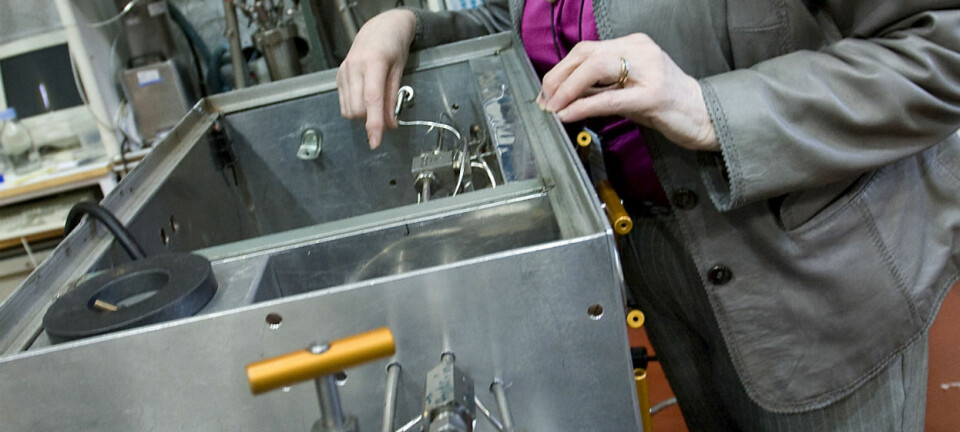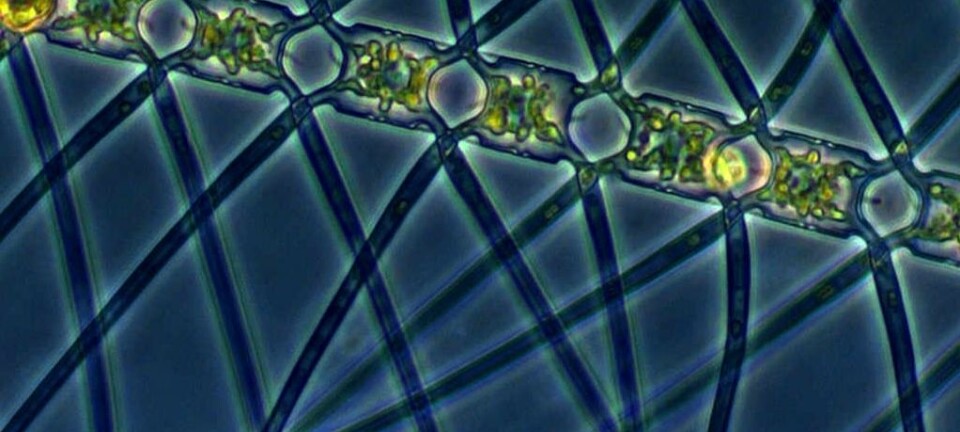This article was produced and financed by Norwegian Institute for Agricultural and Environmental Research

Biochar may help reduce greehouse gas emissions
Not only can biochar be used for long-term carbon storage, recent research results suggest that the material can also help reduce greenhouse gas emissions from agriculture.
Denne artikkelen er over ti år gammel og kan inneholde utdatert informasjon.
Biochar is a carbon-rich, charcoal-like material that makes soil more resistant to climate change. Biochar is being studied in Norway because it can be a way of increasing the amount of carbon that can be stored in the soil. This not only benefits plant growth over the long term, but it also improves the carbon balance of the agricultural sector.
“The main difference between biochar and normal organic materials, such as straw or wood, is that when you use straw on a field it will degrade to CO2 in a short amount of time and complete the carbon cycle. This doesn’t happen to the same extent with biochar, which suggests that biochar may be a better way of storing carbon in soil than other alternatives,” says Adam O’Toole, a researcher at Bioforsk Soil and Environment. His main focus of study is biochar and the benefits it can have on its surroundings, especially when used to store carbon in the soil.
Charcoal throughout the ages
Biochar is the term for charcoal when used for a specific purpose, such as a soil amendment. Hundreds of years ago, in the Middle Ages, people used charcoal to extract iron from ore to make swords and other weapons. The advantage of charcoal is that it burns at a higher temperature than wood, enabling the smelting process. The disadvantage, however, is that the charcoal first has to be produced by burning organic material in pits in the forests. Remnants of these charcoal pits can still be found at a number of locations all over Norway – some of which date back over 600 years.
Today, charcoal is produced through pyrolysis, a thermochemical decomposition process where organic material is heated to extremely high temperatures in the absence of oxygen. Basically, organic material such as straw is put into a machine, the temperature is then cranked up above 300 degrees Celsius, and the end result is substances such as gas, oil and charcoal.

The process stabilises carbon in the charcoal, which can subsequently be used for a number of applications, such as for carbon filters in wastewater treatment, for air filters, to improve the composting process – or as a way to store carbon in soil without it degrading to CO2.
Biochar in soil
Biochar is a stable source of carbon because microbes find it very difficult to break down. That means the carbon contained by biochar is not likely to degrade to CO2 to the same extent as untreated organic materials. O'Toole and his colleagues have spent several years investigating biochar's suitability for storing carbon in soil. They put biochar into the soil and then test the stability of the carbon in the soil, by measuring how much CO2 the soil releases.
The trick, of course, is distinguishing between the CO2 that is emitted by the biochar, and the CO2 that is emitted from other carbon sources in the soil. The researchers are able to do this with a technique that capitalises on the fact that different kinds of plants are characterised by different carbon isotope compositions.
“Wheat, barley, oats and similar are C3 plants, while plant types such as maize and sugarcane are C4 plants," O'Toole explains. "The difference in the isotopic makeup between C3 and C4 plants allows us to track the carbon degradation from each source separately. So, for example, we apply a biochar from a C4 plant – Elephant grass – to a Norwegian C3 soil, and then we take soil gas measurements over a regular period of time to estimate the degradation of the different materials."
Slow degradation
The researchers have found that the biochar degraded by less than one percent during the past two years. In comparison, the same amount of untreated straw degraded by ten percent over the course of two years. This means that biochar is approximately twenty times more stable in of storing carbon than using untreated straw or other organic materials during the first two years that is it put into the soil.
The researchers have also tested just how much biochar can be added to the soil before it has a negative effect on the yield. So far the general trend has been that there are no significant yield differences in terms of plant response. If this is true, it means that large amounts of biochar can be put into the soil without it having a negative effect on either the plants or their yield.
A positive effect on nitrous oxide emissions?
The researchers also have findings that suggest that biochar may, under certain conditions, reduce nitrous oxide emissions from the soil. Nitrous oxide is a powerful greenhouse gas. O’Toole stresses that these results are still preliminary, and that more research is needed before he and his colleagues can say anything for certain.
However, the results so far give cause for optimism – and if the trend continues and researchers can determine why the process takes place, biochar may prove to be even more valuable than researchers initially thought, because it would both increase carbon storage and reduce harmful N2O emissions.
“We have measured both increased and reduced N2O emissions from the biochar plots, so more measurements are needed in order to see clearer trends,” says O’Toole.
“If a reducing effect is found, we will need to conduct more fundamental research to investigate the mechanisms behind the effect biochar has on N cycling. Before we can say whether biochar is a method for reducing N2O or even methane, we would need to find methods for biochar production and applications that create predictable and consistent results for greenhouse gas emissions over a range of soils and agricultural systems.”
Biochar for a cleaner environment
Research on biochar has increased dramatically around the world over the last five years, and a growing body of research is helping to answer the questions about the agronomic utility of biochar and its overall environmental impact.
“We plan to continue to contribute to this research with our national and international partners,” O’Toole says, adding that he thinks that biochar may be a step in the right direction in both improving the soil and helping mitigate greenhouse gas emissions. However, the full potential of the material needs to be studied further.
































